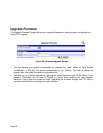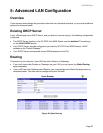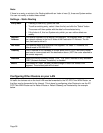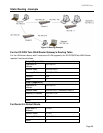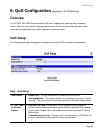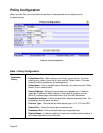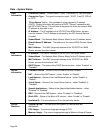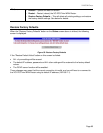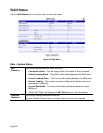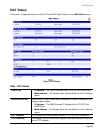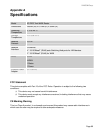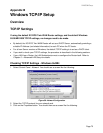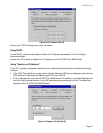
Data – System Status
WAN
Information
• Connection Status – Current status – either "Connected" or "Not connected".
• Connection Type – The type of connection used – DHCP, Fixed IP, PPPoE,
able if using a dynamic IP address
(DHCP). Clicking this button will perform a DHCP "Renew" transaction with
the ISP's DHCP server. This will extend the period for which the current WAN
IP address is allocated to you.
ubnet Mask) for the IP Address above.
ain Name IP Address – The address of the current DNS (Domain Name
er.
of the XC-DPG Twin WAN
or PPTP.
• "Force Renew" button– Only avail
• IP Address – The IP address of the XC-DPG Twin WAN Router, as seen
from the Internet. This IP Address is allocated by the ISP (Internet Service
Provider)
• Subnet Mask – The Network Mask (S
• Dom
Serv
• MAC Address – The MAC (physical) address
Router, as seen from the Internet.
LAN
Information
• IP Address – The LAN IP Address of the XC-DPG Twin WAN Router.
• Subnet Mask – The Network Mask (Subnet Mask) for the IP Address above.
• MAC Address – The MAC (physical) address of the XC-DPG Twin WAN
Router, as seen from the local LAN.
• DHCP Server – The status of the DHCP Server function - either "Enabled" or
"Disabled".
Device
Information
• Firmware Version – Version of the Firmware currently installed.
• NAT – Status of the NAT feature – either “Enable” or “Disable”.
• Load Balance – Status of the Load Balance feature – either “Enable” or
“Disable”.
• Virtual Server – Status of the Virtual Server feature – either "Enabled" or
"Disabled".
• Special Applications – Status of the Special Applications feature – either
"Enabled" or "Disabled".
• DMZ – Status of the DMZ feature – either "Enabled" or "Disabled".
• Block URL – Status of the Block URL feature – either “Enable” or “Disable”.
• Hardware ID – The manufacturers ID for this particular device.
Device
Statistics
• System UpTime – The time since the system of a device was last
reinitialized.
• CPU Usage – The current usage percentage of CPU.
• Memory Usage – The current usage percentage of Memory (Heap & Queue).
Page 64



